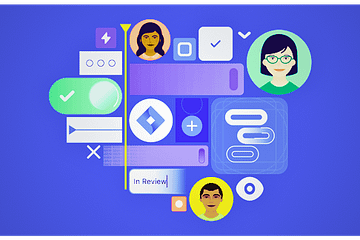In the world of B2B sales, especially for businesses relying heavily on inbound marketing, speed is everything. When a potential customer visits your website and expresses interest – perhaps by filling out a “request a callback” form – the clock starts ticking. Wait too long, and that warm lead quickly goes cold. I saw this challenge play out directly while working with a UK-based ICT provider serving small businesses. Their website generated leads, but the traditional callback process was letting opportunities slip through the cracks.
This project involved identifying and implementing a relatively simple piece of marketing technology (MarTech) – an intelligent callback widget – that had a surprisingly significant impact. It underscored how optimizing a specific part of the sales process (Process), enabled by the right tool (Product), could directly improve sales team performance (People) and boost conversions.
The Challenge: Losing Sales Due to Slow Website Lead Follow-Up
The company invested significantly in driving traffic to dedicated landing pages where prospects could learn about services like website design and telecoms, and either call directly or request a callback. The problem lay with the callback requests:
- Delayed Responses (Process): Callback requests submitted via web forms landed as emails in the sales team’s inbox. Compared to live inbound phone calls, these email leads were often treated as lower priority. The delay between submission and an agent attempting the callback could be hours, sometimes longer.
- Low Contact Rates (People/Process): By the time an agent called back, the prospect might be busy, no longer near their computer, or worse, already talking to a competitor who responded faster. This resulted in poor contact rates and wasted effort.
- Missed Opportunities (Product Impact): Every failed contact attempt represented a lost potential customer and diminished return on marketing investment. With a limited budget, maximizing the conversion rate of each website lead was crucial.
- Potential Complacency (People): The asynchronous nature of email callbacks sometimes led to less urgency among sales agents compared to the immediacy of a ringing phone.
The core issue was the friction and delay between a prospect signaling interest online and connecting with a live sales agent.
My Role: Identifying and Implementing a MarTech Solution
My involvement focused on diagnosing the lead conversion bottleneck and finding a practical solution. Recognizing the critical impact of lead response time, I researched and advocated for implementing a B2B SAAS intelligent callback technology platform to bridge this gap. My role then shifted to overseeing the smooth integration and adoption of the chosen tool.
The Strategy: Leveraging Technology (Product) to Improve Sales Process & People Performance
The strategy was straightforward: eliminate the delay. We decided to implement an intelligent callback widget on the key landing pages.
- Optimizing the Process: Instead of generating an email, a callback request submitted through the widget would instantly trigger a connection. The system would first call an available sales agent.
- Leveraging the Product: Once the agent answered, the platform would immediately dial the website visitor who requested the call, typically connecting both parties within seconds (often under 30 seconds).
- Impacting People: This effectively transformed lower-priority email leads into high-priority, real-time inbound calls within the sales team’s existing workflow. It created immediacy and removed the chance for leads to go cold due to delays.
How the Instant Callback Widget Worked (Process)
The implementation itself was relatively simple:
- A small code snippet added the callback widget to the target landing pages.
- Configuration involved setting up rules for call routing to the sales team.
- The platform handled the automated dialing and connection sequence seamlessly.
Overcoming Sales Team Adoption Hurdles (People)
While the technology was simple, ensuring adoption required clear communication with the sales team. We explained how the tool worked, emphasized the benefit of connecting with hotter leads, and positioned it as a way to help them achieve their targets more easily. Seeing the immediate connection and positive prospect reactions quickly won them over. Some platform features, like call recording, were even integrated into sales coaching, further enhancing performance.
The Impact: Measurable Gains in Calls, Conversions, and Customer Experience
The results were almost immediate and remarkably clear:
- Increased Meaningful Connections: Over a 10-week period, the volume of actual connected calls initiated via the callback widget increased by 16.5% compared to the previous form-based approach.
- Significant Sales Growth: This increase in connected conversations directly translated into a noticeable lift in sales conversions, particularly from mobile search campaigns where prospects often expect immediacy.
- Enhanced Customer Experience: Prospects were often genuinely impressed (“shocked,” according to the sales manager) by the rapid callback speed. This created a positive first impression and a “halo effect” for the subsequent sales conversation.
- Improved Sales Team Performance: The system fostered urgency and provided valuable coaching tools. Agents felt more effective connecting with engaged prospects instantly.
Key Takeaways on Optimizing Lead Response for B2B Sales
This project was a great example of how a focused technology implementation can yield significant returns by addressing a critical process bottleneck:
- Speed Matters in Sales: In the age of instant gratification, minimizing lead response time is crucial for maximizing conversion rates, especially for inbound web leads.
- Leverage MarTech Wisely: Tools like intelligent callback widgets (part of the broader CPaaS – Communication Platform as a Service – landscape) can provide elegant solutions to common sales process friction points.
- Focus on High-Impact Processes: Optimizing the initial connection between a warm lead and a sales agent can have a disproportionately large impact on the entire sales funnel.
- Technology Can Influence Behavior: Implementing a tool that changes the workflow can positively influence team urgency and performance (People), when introduced effectively.
Ultimately, bridging the gap between online interest and real-time human connection proved incredibly valuable. It demonstrated that sometimes, a simple, well-implemented technological fix (Product) addressing a key process inefficiency can unlock significant gains in sales performance and customer satisfaction.
